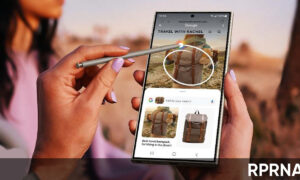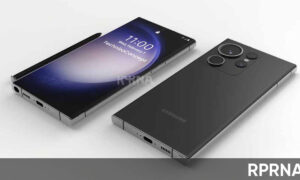Recently, Google officially introduced the Android 12 operating system for smartphones. Now the company has announced the Android 12L operating system for tablets and foldable phones.
According to the official introduction, the 12L is a special feature drop that makes Android 12 even better on large screens. Google optimized and polished the system UI for large screens, made multitasking more powerful and intuitive, and improved our compatibility support for apps so they look better by default. The tech has also added a handful of developer APIs.
JOIN OUR ANDROID CHANNEL ON TELEGRAM
Below you can check some Android 12L Features and Changes:
OS optimized for large screens
Android 12L refines the system UI to make it more beautiful and easier to use on large screens—across notifications, quick settings, lock screen, overview, the home screen, and more.
On large screens, the notification shade takes advantage of the space by showing Quick Settings and notifications in a new two-column layout. The lock screen also uses a larger two-column layout to highlight notifications and clock, and system apps like Settings are also optimized.
The company focused on making key interactions easier on larger screens. For example, the lock screen pattern and PIN controls on tablets are now displayed at the side of the screen for easier reach, and users can simply tap the other side of the screen to bring the pin/pattern controls over to that side.
For foldable, they optimized the home screen grid and polished the fold-unfold transition, so that users move seamlessly from a single exterior screen to the larger unfolded screen, reinforcing continuity while preserving their choices.

For developers: Changes in media projection
Starting in 12L, when the virtual display is rendered on the surface, the virtual display is scaled to fit the surface using a process similar to the Center Inside option of Image View.
The new scaling approach improves screencasting to televisions and other large displays by maximizing the size of the surface image while ensuring the proper aspect ratio.
Powerful and intuitive multitasking
Users often multitask when using the larger screens of tablets, Chromebooks, and foldable. In the 12L, new productivity features make multitasking even more powerful and intuitive.
12L adds a new taskbar that makes it easier to launch and switch apps on the fly. Gestures make using the taskbar even faster with drag and drop to enter split-screen mode and a swipe up to go home.
In gesture navigation, a quick-switch gesture lets users flip through recent apps. Users can reveal or hide the taskbar at any time with a long press.
Running apps in split-screen mode is a popular method of multitasking, and in the 12L we’ve made it easier than ever to find and use split-screen. Users can now drag and drop their favorite apps into split-screen directly from the taskbar, or they can also use a new “Split” action in Overview to start split-screen mode with a single tap.
To make split-screen a more consistent experience for users, Android 12 and higher allows all apps to enter multi-window mode, even if they are resizable.

For developers: Test your apps in split-screen mode
With split-screen mode becoming more accessible, and with the change in Android 12 that lets users launch all apps into split-screen, we strongly recommend that you test your apps in split-screen mode.
Improved compatibility experience
Many apps are already optimized for large screen devices and offer great experiences through responsive layouts, support for multi-window mode, continuity across screen size and device posture changes, and more.
For apps that are not yet optimized, we’ve made visual and stability improvements to our compatibility mode to provide a better experience for users and make those apps look better by default.
Google improved the UI for letterboxing by making a number of options customizable by device manufacturers through overlay configurations. For example, device manufacturers can now configure the app aspect ratio, apply rounded corners to the app window, and set the status bar transparency.

For developers: Check your apps in compatibility mode
If your app isn’t yet optimized to adapt to screen size and device posture changes, your app may be launched in compatibility mode. We recommend testing your app with 12L compatibility modes to make sure your app looks and functions properly.
More updates and resources for large screens
Changes to Google Play on large screens
To make it easier for people to find the best app experiences on their tablets, foldable, and Chrome OS devices, we’re making changes in Play to highlight apps that are optimized for their devices.
We’re adding new checks to assess each app’s quality against our large screen app quality guidelines to ensure that we surface the best possible apps on those devices. For apps that are not optimized for large screens, we’ll start warning large screen users with a notice on the app’s Play Store listing page.
We’ll also be introducing large-screen-specific app ratings, as announced earlier in 2021, so users will be able to rate how your app works on their large-screen devices.
These changes are coming in 2022, so we’re giving you time to get your apps ready.
Activity embedding with Jetpack WindowManager
Activity embedding lets you take advantage of the extra display area of large screens by showing multiple activities at once, such as for the List-Detail pattern, and it requires little or no refactoring of your app. You determine how your app displays its activities—side by side or stacked—by creating an XML configuration file or making Jetpack WindowManager API calls. The system handles the rest, determining the presentation based on the configuration you’ve created. If your app uses multiple activities, we recommend giving activity embedding a try. To learn more, see Activity embedding.
Device orientation request
Unlike standard phones, foldable and tablets are frequently used in both landscape and portrait orientations. Tablets are often docked in landscape position, while foldable can be oriented based on their fold.
Some apps request a fixed orientation in portrait or landscape and expect to remain in their preferred orientation regardless of the orientation of the device (see the screen orientation manifest attribute). While this is still supported in 12L, we’re now giving device manufacturers the option of overriding the app’s request for preferred orientation.
In Android 12 (API level 31) and higher, device manufacturers can configure individual device screens (such as the tablet-size screen of a foldable) to ignore the orientation specification and force an app in portrait mode to be presented upright but letterboxed on landscape displays. By ignoring the specification, Android can better serve the developer’s intention of always presenting an app in a fixed aspect ratio while keeping the app oriented for optimal usability.
However, for the best user experience, design your apps with responsive layouts that make full use of the screen space available in both portrait and landscape orientations on screens larger than 600dp.
Get your apps ready
With the 12L feature drop coming to large-screen devices in early 2022, now is the time to try your apps for the new features and give us feedback.
You can get started by setting up the 12L emulator. You’ll be able to see the latest system UI changes for large screens, try your apps with the taskbar and split-screen mode, test your app in compatibility mode and even try activity embedding with the Jetpack WindowManager APIs.
If you’re just getting started with large screens development, check out Large Screens and Foldables guides to read the latest guidance and techniques for building great experiences on these devices. Watch for regular updates coming your way throughout the 12L Developer Preview.
















